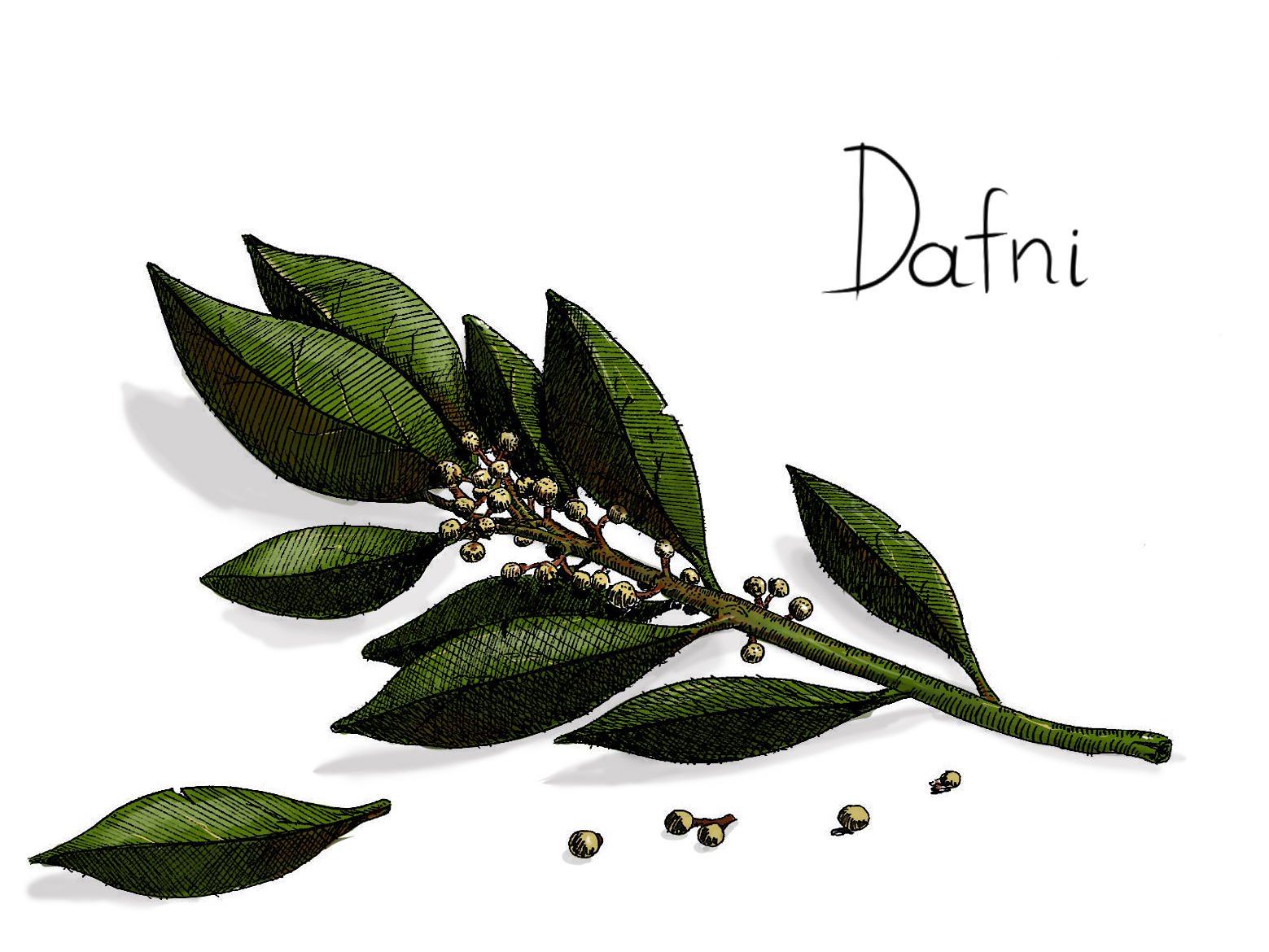
Dafni
By Yiannis Karakasis MW
At a glance
Among the big stars of Vidiano and Liatiko, Dafní has perhaps little chance to get full attention. However, it could be a candidate in the Oscars' supporting role category with its aromatic distinctiveness. Very few varieties have such a particular aroma. Although fragrant, like Sauvignon Blanc, its aromas have nothing to do with gooseberry and cat’s pee, but rather with Bay Laurel (Laurus Nobilis) and dried herbs.
It is planted in just a few hectares and mainly produced in an unoaked style by few producers for the time being. However, success in the international markets encourages more experimentation and investment.
Distinctly herbal in its aroma ranges from bay leaf, sage, rosemary, and flowers or herbs to ripe stone fruit and ginger. It makes wines of intense personality that are moderate in their alcohol and acidity.
History
Unfortunately, as is the case with many Cretan varieties, there is no abundance of information until the 11th century. Its name is derived from its aromas of bay leaf (dáfni in Greek). The Dafní variety was saved from inevitable extinction when in the early 1990s, it was planted in the Psarades vineyard at 480 m elevation by the Lyrarakis family.
This variety may well have been used to produce wine during the last Minoan period. On a copper vessel of this period found in the Eileithyia cave, in Tsoutsouras of the Monefatsiou region, the name Dafnitis Oinos was mentioned.
In the vineyard
There is now approximately 8 ha on the island, mainly in the centre. Still, more producers are keen on experimenting with the variety. It is late-ripening, ripens in mid-September, and is trained either as a bush vine or on wires.
It looks very much like a table grape (big bunches and berries) and is well suited to climate change. It is furthermore resistant to most diseases and suitable for sustainable viticulture.
So far, Dafni presents little clonal diversity with two biotypes under research.
Terroir
Planted mainly in Heraklion at altitudes and already produced as a single vineyard by a couple of producers.
Wine styles
Single varietal: wines with zesty acidity and intense aromas
Blends: with other Cretan varieties such as Vilana, Plyto, Muscat and Thrapsathiri
Ageing potential
As a rule, these wines show their best during the first 3–4 years following the harvest, gaining more layers on the palate and integrating all structural elements with time. However, I have seen exciting mature examples that had held very well after almost a decade of life (for example Lyrarakis Dafni 2012).
Perfect pairing
Try it with steamed mussels and herbs.



